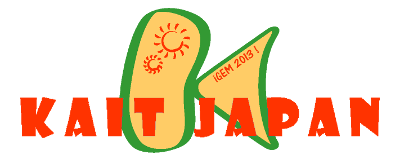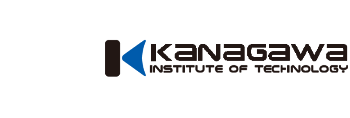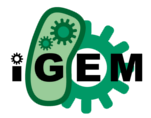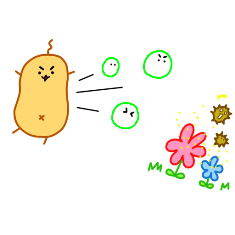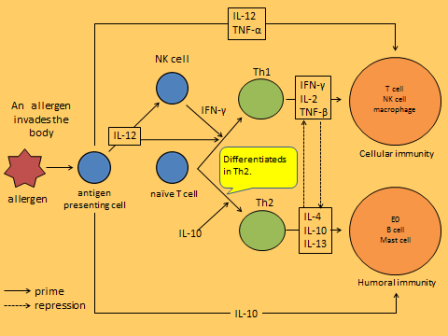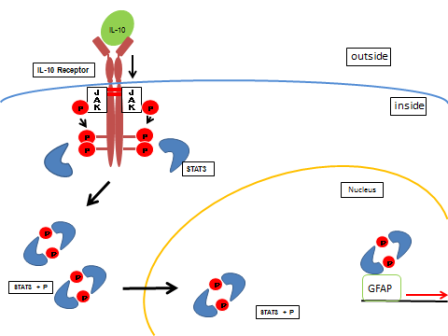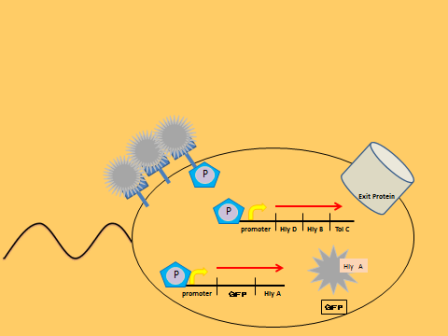Team:KAIT Japan/Project
From 2013.igem.org
(Prototype team page) |
|||
| (32 intermediate revisions not shown) | |||
| Line 1: | Line 1: | ||
| - | + | [[File:KAIT Japan 2013RogoTop.png|left|link=Team:KAIT_Japan]] | |
| + | [[File:KAIT Japan2013 Kanako.png|link=http://www.kait.jp/index2.php]] | ||
| + | [[File:KAIT Japan 2013 iGEMRogo.png|link=http://ung.igem.org/Main_Page]] | ||
| + | {| style="width:98.5%; margin-left:0.2em; border-color:#f30; border-style:solid; border-collapse:collapse; background-color:#fc6; text-align:left" | ||
| + | | style="width:25%" valign="top" | | ||
| + | :[[File:KAIT Japan home.png|link=Team:KAIT_Japan]] [[Team:KAIT_Japan|Home]] | ||
| + | :[[File:KAIT Japan team.png|link=Team:KAIT_Japan/Team]] [[Team:KAIT_Japan/Team|Team]] | ||
| + | https://static.igem.org/mediawiki/2013/9/9a/KAIT_Japan_project.png <span style="color:#f30">[[Team:KAIT_Japan/Project|Project]]</span> | ||
| + | :[[File:KAIT Japan parts.png|link=Team:KAIT_Japan/Parts]] [[Team:KAIT_Japan/Parts|Parts]] | ||
| + | :[[File:KAIT Japan protocol.png|link=Team:KAIT_Japan/Protocol]] [[Team:KAIT_Japan/Protocol|Protocol]] | ||
| + | :[[File:KAIT Japan notebook.png|link=Team:KAIT_Japan/Notebook]] [[Team:KAIT_Japan/Notebook|Notebook]] | ||
| + | :[[File:KAIT Japan results.png|link=Team:KAIT_Japan/Results]] [[Team:KAIT_Japan/Results|Results]] | ||
| + | :[[File:KAIT Japan safety.png|link=Team:KAIT_Japan/Safety]] [[Team:KAIT_Japan/Safety|Safety]] | ||
| + | :[[File:KAIT Japan human practice.png|link=Team:KAIT_Japan/Human Practice]] [[Team:KAIT_Japan/Human Practice|Human Practice]] | ||
| + | ------ | ||
| - | |||
| - | |||
| - | |||
| - | |||
| - | |||
| - | |||
| - | |||
| - | |||
| - | |||
| - | |||
| - | |||
| - | |||
| - | |||
| - | + | | style="border-left:3px solid #f30" valign="top" | | |
| + | ='''Project'''= | ||
| + | :[[File:Igem3.png]] | ||
| + | =='''Hay fever curE.coli'''== | ||
| + | 1. Overview | ||
| + | <br> | ||
| + | Japanese on of six people is troubled now by hay fever. These people take a medicine for the hay fever. But, If they take it , they become sleepy. If become sleepy, they cannot work and study. So, we are working on a project to relive hay fever by Escherichia coli to improve these. | ||
| + | It is two kinds of immune cells said to be Th1 cell and Th2 cell to greatly participate in hay fever, and both usually keep balance and control immunoreaction. | ||
| + | When biased to Th2 cell immune balance between Th2 cells and Th1 cells is lost due to changes in the living environment and diet, IgE antibodies that react with allergens such as pollen is produced in excess, allergy symptoms are from being developed . | ||
| + | Further, cells of the two has also been found that in order to balance the immune whole mutually restrain each other. | ||
| + | Therefore, be to increase the amount of Th1 cells than Th2 cells, it is possible to restrain the Th2 cells, and suppress the production of IgE antibodies against substances less harm that may be unresponsive nature such as pollen and allergies it is thought to be improved. | ||
| - | + | <br> | |
| - | + | ||
| - | + | ||
| - | + | ||
| - | + | ||
| - | + | ||
| - | + | ||
| - | + | ||
| - | + | ||
| - | + | ||
| - | + | ||
| + | 2. Immune system | ||
| + | <br> | ||
| + | Immune responses are regulated firstly by antigen-presenting cells ,such as the macrophages and dendritic cells ,and by the T helper lymphocyte subclasses Th1 and Th2, which are components of acquired immunity. | ||
| + | Naive Th0 cells are clearly bipotential and serve as precursors of Th1 and Th2 cells. Among the factors currently known to influence the differentiation of these cells towards the Th1 or Th2 subsets, the cytokines produced by cells of the innate immune system are the most important. Thus, IL-12, produced by activated macrophages or other Allergens, is the major inducer of Th1 differentiation and hence cellular immunity; this cytokine acts in concert with natural killer (NK)-cell-derived IFN-γ to promote Th1 responses. | ||
| + | IL-12 and TNF-α, in concert with NK- and Th1-cell-derived IFN-γ stimulate the functional activity of T cytotoxic (Tc) cells, NK cells and activated macrophages, which constitute the major components of cellular immunity. Because of these crucial and synergistic roles in inflammation, IL-12, TNF-α and IFN-γ are considered the major pro-inflammatory cytokines. | ||
| + | Th1 and Th2 responses are mutually inhibitory. Thus, IL-12 and IFN-γ inhibit Th2, and IL-4 and IL-10 inhibit Th1 responses. IL-4 and IL-10 promote humoral immunity by stimulating the growth and activation of mast cells and eosinophils, the differentiation of B cells into antibody-secreting B cells and B-cell immunoglobulin switching to IgE. Importantly, these cytokines inhibit macrophage activation, T-cell proliferation and the production of pro-inflammatory cytokines. Thus, IL-4 and IL-10 are the major anti-inflammatory cytokines. | ||
| + | Th1 and Th2 responses are mutually inhibitory. Thus, IL-12 and IFN-γ inhibit Th2, and IL-4 and IL-10 inhibit Th1 responses. IL-4 and IL-10 promote humoral immunity by stimulating the growth and activation of mast cells and eosinophils, the differentiation of B cells into antibody-secreting B cells and B-cell immunoglobulin switching to IgE. Importantly, these cytokines inhibit macrophage activation, T-cell proliferation and the production of pro-inflammatory cytokines. Thus, IL-4 and IL-10 are the major anti-inflammatory cytokines. | ||
| + | [[File:ReR1.png]] | ||
| + | <br> | ||
| + | :::::::Figure1 Immune system | ||
| + | <br> | ||
| + | So, we will make a device to make IL12 to receive IL10 by using the immune system, | ||
| + | And above Th2 cells in the body, increase the cells of Th1 cells. We thought it was trying to suppress the reaction of hay fever. | ||
| - | + | 3. The details of our project | |
| + | <br> | ||
| + | We wanted to try to create a device, as shown in Figure 2. | ||
| + | <br> | ||
| + | 3-1 Interleukin10 receptor | ||
| + | <br> | ||
| + | IL10 receptor receives IL10. IL10 resepter consists of two kinds, α chain and β chain. | ||
| + | And it has taken the structure of the dimer. | ||
| + | IL10 is increased in the body, IL10resepter will be receiving first. | ||
| + | <br> | ||
| + | 3-2 STAT3(Signal Tranducer and Activator of Transcription 3) | ||
| + | <br> | ||
| + | Stat3 is a signal and transcription factors in the cell.It is present in the cytoplasm in the deactivation mode | ||
| + | IL10 binds to the IL10 receptor, intracellular domain of JAK(Janus Kinas) receptor is phosphorylated STAT3. | ||
| + | It shifts to the nucleus to form a dimer that STAT3 is phosphorylated. | ||
| + | STAT3 dimers migrated to the nucleus, and activates the transcription by binding to the GFAP gene as a target. | ||
| + | :[[File:Pro.png]] | ||
| + | <br> | ||
| + | 3-3 Downstream gene | ||
| + | <br> | ||
| + | STAT3 phosphorylated binds to the GFAP gene promoter. | ||
| + | The portion binds to STAT3 phosphorylated exists in a GFAP gene. | ||
| + | STAT3, which is phosphorylated binds to the GFAP gene promoter. | ||
| + | Part that binds to STAT3, which is phosphorylated in the GFAP gene exists. | ||
| + | Channel for the transport protein and gene of interest is created when it binding. | ||
| + | It is a mechanism that IL12 is released to outside bacteria. | ||
| + | This system was created based on the draft of 2011 the UNICAMP-EMSE. | ||
| - | + | This time, since the test interleukin of whether the activity is difficult in the short term, it was thought that instead of the GFP the IL12, it would be to be replaced by interleukin if successful. | |
| + | :[[File:Rr.png]] | ||
| + | ::::::::::Figure3 GFP | ||
| Line 43: | Line 85: | ||
| - | |||
| - | + | |} | |
| - | + | ||
| - | + | ||
| - | + | ||
| - | + | ||
| - | + | ||
| - | + | ||
| - | + | ||
| - | + | ||
| - | + | ||
| - | + | ||
| - | + | ||
| - | + | ||
| - | + | ||
| - | + | ||
| - | + | ||
| - | + | ||
| - | + | ||
| - | + | ||
| - | + | ||
Latest revision as of 00:27, 28 September 2013
|
|
ProjectHay fever curE.coli1. Overview
2. Immune system
This time, since the test interleukin of whether the activity is difficult in the short term, it was thought that instead of the GFP the IL12, it would be to be replaced by interleukin if successful.
|
 "
"
